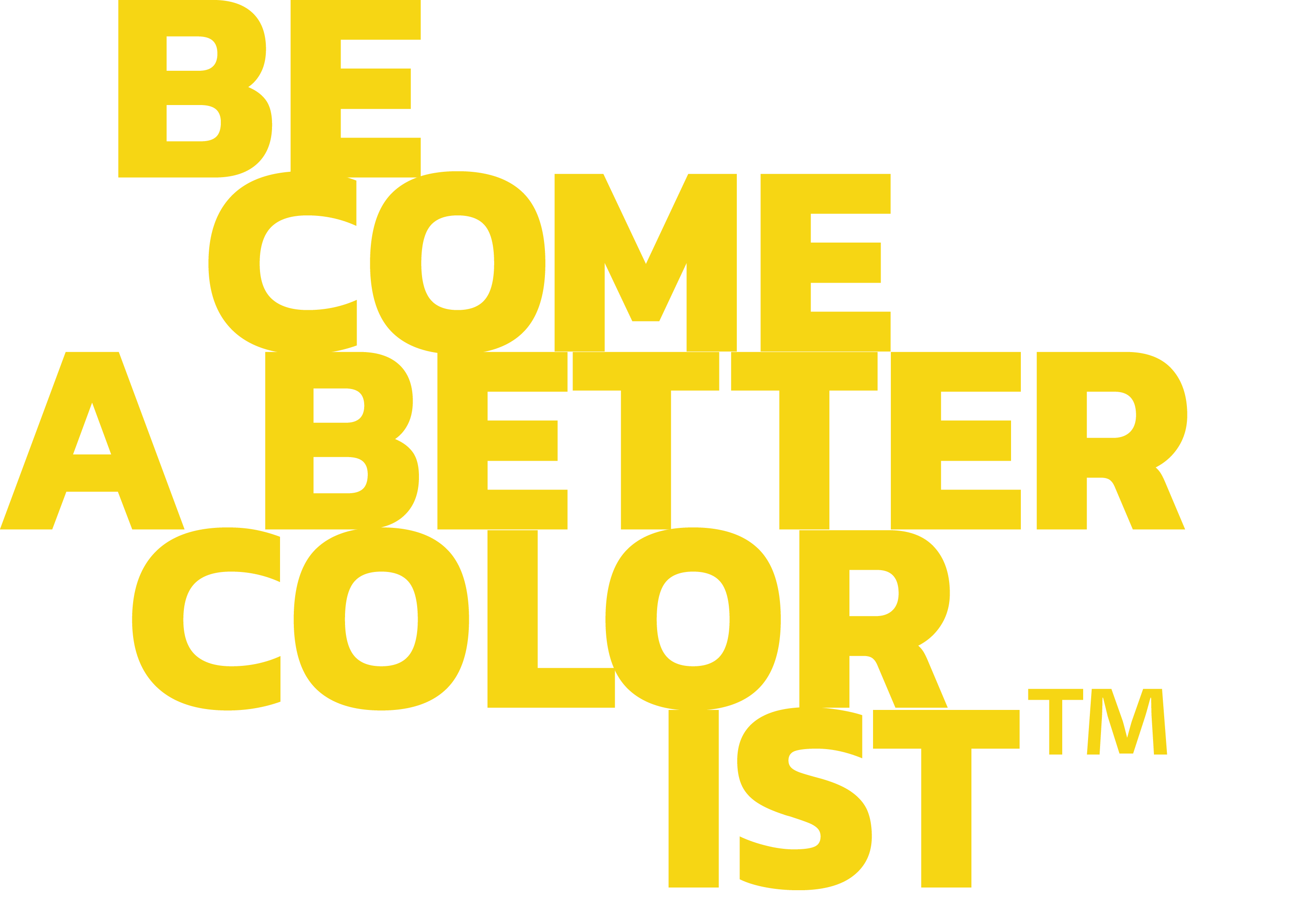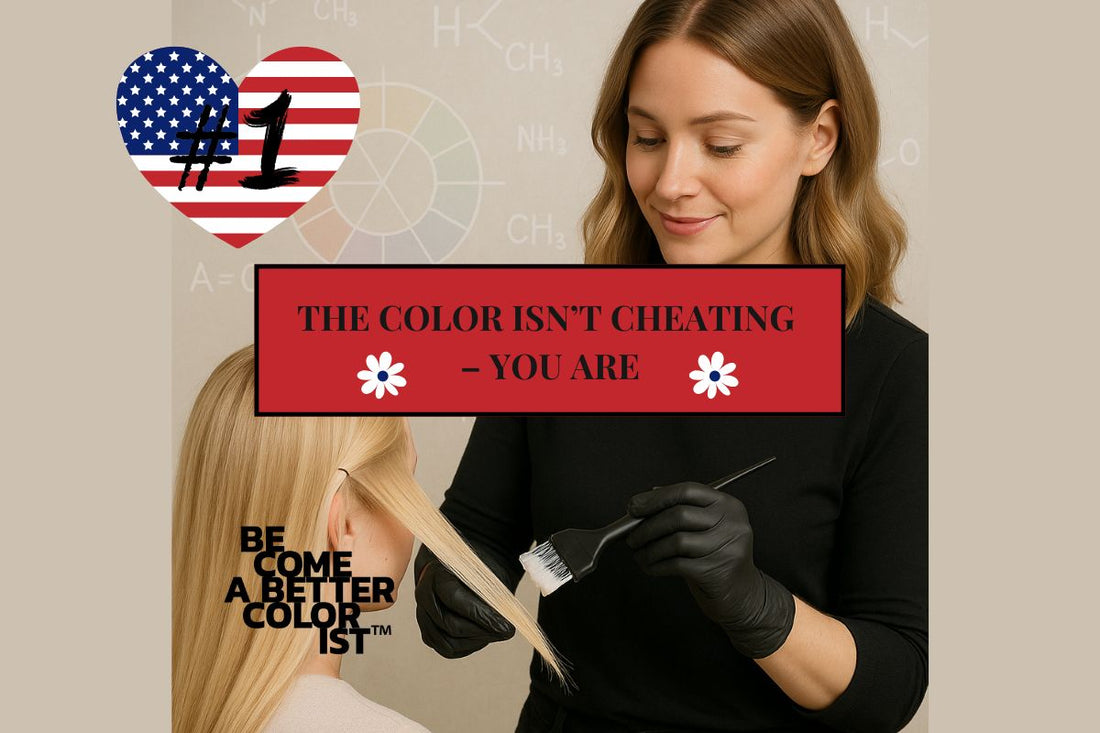That feeling…
Have you experienced that moment? You've analyzed the client's hair, carefully chosen your formula, followed every instruction to the letter – but still, the result didn’t turn out the way you envisioned. That perfect tone you expected never appeared. Instead, you’re staring at a result that feels… wrong. Don’t worry – you’re far from alone.
Why doesn’t it always match the color chart?
This question concerns all of us who work with hair color. Why doesn’t it always look like the swatch? And what do we actually mean when we say a color is "true to tone"?
Color charts are amazing tools. They help us visualize shades, communicate with clients, and build formulas. But they show an ideal. A standardized version of reality. And reality, as we know, is anything but standardized.
Hair with a history
When we color hair, we rarely work on a blank, perfect canvas. We work on hair with a history – previous color, bleach, sun exposure, products, heat styling, and sometimes even life itself. All of this affects how a new color behaves. It’s not enough to just look at a swatch and think, “This one fits.”
What does "true to tone" actually mean?
You’ve probably heard the term “true to tone.” But what does it really mean?
A color is true to tone when its level, tone, and placement on the color wheel align with reality. That means if a color is named 9VG, we expect it to be a level 9 (light blonde) with a violet-gold tone that gives a beige-like feeling to the hair. But how often do we actually see colors behave exactly like that?
Is the problem the color – or the information?
Many stylists say the color isn’t true to tone. But what if we turn that around? What if the issue isn’t the color – but the information surrounding it?
It’s easy to think the color is lying, but in fact, it’s doing exactly what the chemist formulated it to do. What might be lacking is how the color has been interpreted, translated, or marketed. A color might be given a name or number to fit a certain market – but it doesn’t always match the actual chemical makeup. The result? We stylists get confused, frustrated, and lose trust in the color system.
Something feels off – but what?
And this happens more often than we think. That’s one reason why so many of us talk about this problem. We sense something is wrong – but it’s not always easy to pinpoint what.
When color doesn’t behave as expected
So, how do you know if your color is true to tone or not?
Unfortunately, it’s often only when something goes wrong that we start questioning. When a color doesn’t behave as expected. That’s when we start digging – and sometimes we realize that the color isn’t wrong, but perhaps misplaced. Or that we misjudged something in our analysis.
Always double-check your analysis
The first thing you should do is double-check your analysis. Did you start from the correct level? Did you identify the right underlying pigment? Did you account for the hair’s porosity and condition?
We all know how easy it is to cut corners. Stress, routine, and time pressure make us skip the most important steps. But the analysis is everything. It’s the foundation of the entire coloring process.
An eye-opening example
I remember a training where I was working with a specific color line and a model who wanted a cool, clean blonde tone. We picked a 10V from the color chart. It looked perfect – exactly the tone we were aiming for. But the result came out too yellow. Not because the color was wrong – but because we underestimated the amount of warm underlying pigment in her hair and overestimated how much violet pigment was in the formula. Only when we stepped back and analyzed what actually happened could we correct the result.
Get to know your color system – for real
That experience made me truly understand how important it is to really know your color system. It’s not about memorizing formulas – it’s about understanding what each shade actually does. And having the courage to question the “truth” shown in the swatch book.
If you’re sure you did everything right – and the result still surprises you – then it’s time to question the color. And here’s one of my best tips: swatch the color yourself if it doesn’t seem to match the chart.
Practical tip: Create your own color reference
-
Use neutral, uncolored white hair
-
Test the shades yourself
-
Document the result for future reference
-
Compare it to the swatch – does it really look the same?
It takes a bit of time and patience, but it gives you an unbeatable visual reference. You get an honest picture of what the color actually does – not what the brochure says it should do.
Train your eye for color
Being able to see undertones, interpret shades, and place them on the color wheel takes practice. Many stylists tell me it’s hard to see differences in tones. That’s okay. It’s just like training your eye to see a proper haircut or balanced shape – it’s a muscle you can develop.
That’s why in Become A Better Colorist 3.0, we focus on “seeing color on color.” We train the eye, the brain, and the logic behind color placement. When you can see how a color actually behaves in the hair it’s applied to – that’s when you take control.
From color user to colorist
You’re no longer just a user of a color line – you become an independent colorist. You can anticipate the outcome before it happens. You can explain to your client what’s possible, and why certain results can’t be achieved – yet. You can adjust, adapt, choose the right base, right developer, right mix. You’re the one in charge.
That’s what makes you a better colorist.
You’re not alone
I also want to remind you that you are never alone in this. There are many of us out here asking the same questions, facing the same challenges, and wanting to grow. In my training, I’ve met so many colleagues who went from uncertainty to confidence simply by getting the right knowledge – explained in a way that’s actually easy to understand and apply.
Next time things don’t go as planned…
So next time the color doesn’t turn out the way you expected, don’t just ask:
“What did I do wrong?”
Also ask:
“Does this color really match what it claims to be?”
And:
“Did I understand the canvas well enough?”
Sometimes it’s not about changing the color – but changing the perspective. And above all – trust your eyes. Trust your analysis. Trust that you can learn to see the difference.
Because in the end, it’s not about having a perfect color system – it’s about having the understanding that makes you strong, no matter which system you use.
/ Camilla Rörstrand

